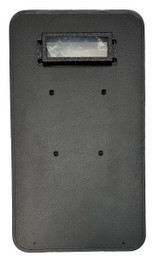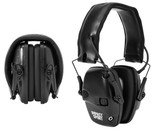Guide to Ballistic Shields (in Layman Terms) - Battle Steel®️
Guide to Ballistic Shields (in Layman Terms)
If you are new to armor and ballistic shields in particular, this guide is what you need to understand what ballistic shields (also called blankets) are about, what are technologies and materials behind them, and what are possible applications of ballistic shields. We also explain the difference between various levels of protection ballistic shields offer.
What are ballistic shields
Ballistic shields are a special type of wielded protective equipment designed to offer protection against bullets, projectiles and physical damage when there’s a high risk of return fire during police operations, assaults, raids, and criminal suppression activity.
One of the oldest defensive equipment in the word, shields had been offering protection against contemporary weapons for more than 4000 years. Today, ballistic shields protect their wearers from firearms. Unlike personal body armor, shields can typically withstand multiple shots easily. They also do not transfer projectile energy and momentum to the wearer and hence can stop bullets without causing trauma or shock to the officer allowing them to continue performing their duties and survive the gunfight. Hence, ballistic shields are one of the main equipment in certain combat situations when aggressive and armed resistance is highly likely.
Do not confuse ballistic shields with riot shields. The latter are transparent, made from polycarbonate and do not offer any protection from firearms. Riot shields can only offer limited protection against physical damage, while ballistic shields are certified by NIJ as bullet-resistant armor of certain protection level (see below). Do not use a riot shield as a budget replacement for a ballistic shield! This is dangerous.
Applications of ballistic shields
Typical applications of ballistic shields include a variety of offensive, defensive and patrol situations:
- Breach into an objective by force
- Criminal suppression
- Guard services
- Holding a perimeter
- Clearing or patrolling an area
- Approaching a potentially dangerous or armed suspect
- Emergency responses
A ballistic shield provides coverage and protection on open areas when there are no other ways to cover and defends against ballistic threats during various police and SWAT operations.
Technologies and materials
Innovative technologies of recent years allowed to reduce weight of ballistic shields and increase their stopping or deflecting capabilities at the same time. Modern ballistic shields are lightweight thanks to use of polymer or composite materials. At the same time, they offer high level of protection against pistol bullets, rifle bullets, thrown projectiles, and also against chemicals and toxic materials, at least partially.
Currently, the following materials make up the majority of ballistic shields:
- UHMWPE – stands for Ultra-High Molecular Weight Polyethylene. The entire shield is made from a special type of extra-resistant polyethylene fiber that can effectively stop bullets and projectiles.
- Kevlar, aramid, prepregs or other synthetic fibers – ballistic shields or blankets are completely made from or just contain synthetic fibers. Just like in body armor, such fiber disperses the energy of the impact and stops the bullet.
- Polymer non-fibrous laminates – bi- or four-directional sheets of polymer materials (such as Tensylon) that are extremely hard to tear.
- Composite materials – this term often means that a shield is constructed from multiple layers of various materials combined together into a single “sheet”. For example, the material may contain layers of synthetic bullet-resistant fiber, UHMWPE, ceramic tiles, polymer foams or metal.
Protection levels
NIJ ballistic standards establish the following protection classes, each providing some guaranteed level of protection. In practice, this means that if a ballistic shield is NIJ-certified as a certain class, this shield is safe to buy as it is guaranteed to guard you from the threats within its protection level.
As of 2022, NIJ Standard 0108.01certifies the following protection levels:
- Level II. This protection level guarantees that a shield can withstand 5 shots of 9 mm or .357 Magnum bullets, without penetration.
- Level IIIA. The most common protection level guarantees protection against higher speed 9 mm rounds and against .44 Magnum, at least 5 shots.
- Level III. Guarantees that a shield withstands 5 rifle shots of 7.62 mm or .308 Winchester.
- Level IV. The highest level of protection. The NIJ standard certifies shields to protect a wearer against one shot of armor piercing ammunition such as .30-06.
Does these protection levels mean that a ballistic shield can only protect from just five (or even one in case of .30-06) shots? Normally, not. The idea of NIJ tests is to ensure zero penetrations are made through the shield or the armor in all observed test shots. This, of course, does not mean the armor or the shield becomes completely useless after that. This only means that further protection is not guaranteed, especially if further bullets hit the already damaged area of the shield. However, in real-world situations a ballistic shield can take much more than 5 rounds.
Usually, low-weight shields provide lower class protection.
How to use a ballistic shield
Ballistic shields have a number of uses in offensive, defensive and patrol situations. While detailed description of shield tactics and manipulation goes beyond the scope of this article, we nevertheless provide some basic information on how ballistic shields are used in specific circumstances.
- Surround and call-out. SWAT operatives surround the building and call the suspects out. Sometimes, such situations, especially when hostages are taken, can take hours to resolve. Thus, officers need cover. Ballistic shields protect officers from gunshots and projectiles thrown out of the windows.
- Takedown. Takedown operations aim to catch suspect unawares. Taken by surprise, a suspect does not offer much resistance, but in case of shooting, officers are equipped with ballistic shields or smaller personal shields.
- Dynamic entry is a mobility-first type of police operation when SWAT ops break into the objective and quickly clear it. While dynamic entry relies on speed and instant suppression of criminals, shields can still be used to hold the perimeter to prevent escape of suspects. Operatives can also use compact size one-handed ballistic shields for additional protection.
- Deliberate entry is a tactics very similar to dynamic entry, but more scrupulous and defensive. Where dynamic entry is all about speed, deliberate entry combines speed with protection. Policemen or SWAT clear the objective in their own deliberate pace, securing rooms one by one and holding the area using ballistic shields or blankets.
- Assault. When a certain area must be quickly took down and cleared, large size ballistic shields are rarely helpful, especially in close spaces like hallways, corridors or transport, because they hinder mobility. However, ballistic shields can protect operatives from blind shots from above on stairways or while turning corners. Also, a rolling platform shield can be used to protect two or even more officers in a narrow corridor while allowing them to fire through the side cutouts on the shield.
Recent Posts
-
Understanding Ballistic Shield Ratings and Their Applications
The Trusted Name in Tactical Defense - BattleSteel® When it comes to protecting those who protect us …2025-04-19 -
The Importance of Hearing Protection in Tactical Environments
The Legacy of BattleSteel® BattleSteel® is a trusted name in the world of tactical defense equipment …2025-04-14 -
How to Properly Fit and Wear a Plate Carrier
About BattleSteel and Their Mission BattleSteel is a trusted name in the tactical gear industry, ren …2025-04-11


